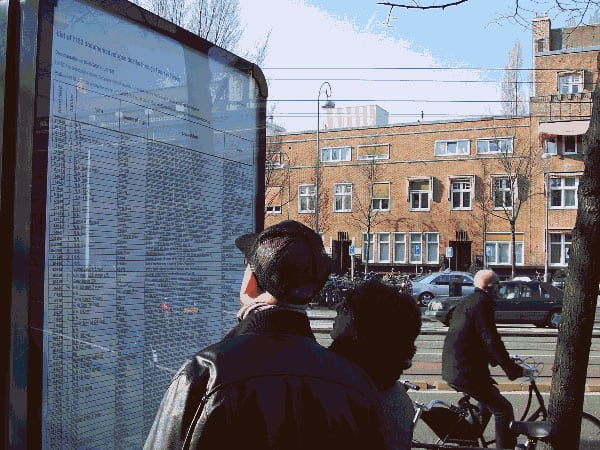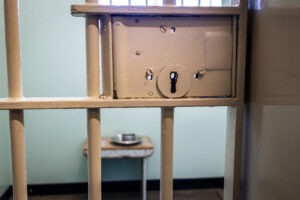
August 3, 2018; Hyperallergic
We were startled to see the majority of The List removed from Great George Street this Sunday. Did you or anyone you know see something? Do you know why it has been removed?
Help us find out what happened! pic.twitter.com/3yCMoOqFow
— Liverpool Biennial (@Biennial) August 1, 2018
When artist Banu Cennetoğlu first happened upon what would become The List in 2002, it contained about 6,000 names. Each represented a refugee who had died within or near the borders of Europe while seeking asylum. Cennetoğlu has made it her mission to publicize the growing list of names ever since, “using public spaces like billboards, transport networks, and media publications.”
Sign up for our free newsletters
Subscribe to NPQ's newsletters to have our top stories delivered directly to your inbox.
By signing up, you agree to our privacy policy and terms of use, and to receive messages from NPQ and our partners.
Most recently, a version of The List was installed on a construction wall on Great George Street as part of the 2018 Liverpool Biennial. Last week, that installation, which included 34,361 names, was “anonymously removed by unauthorized persons unaffiliated with the arts festival.”
As reported in Hyperallergic and on the website for the Biennial, no one seems to know who removed The List. Liverpool city officials had no knowledge of who might have removed it. The developers who own the site where the wall sits—now stripped bare and with just a few wisps of The List remaining—are reviewing CCTV footage for clues as to who might have taken it down.
The list upon which Cennetoğlu’s work is based is a document compiled by UNITED for Intercultural Action, which identifies itself as a “European network against nationalism, racism, fascism and in support of migrants and refugees.” This umbrella group represents a network of 550 NGOs in 48 countries who work to track refugee deaths, which European governments do not openly report.
It has been suggested that The List may have been removed in response to “the divisive, misleading, and misinformed immigration policies surrounding Brexit.” Cennetoğlu worked with The Guardian to release a printed version of The List along with its June 20th issue, to mark World Refugee Day. Copies of The List are available at exhibition venues in Liverpool and on The Guardian website.
Of course, whoever was responsible for removing the art installation did not make The List itself go away. The work of documenting the lives lost continues and likely will for some time to come. Removing an art installation will not solve the complex challenges facing Europe and a post-Brexit UK when it comes to immigration and the treatment of refugees. In fact, it’s possible that the missing art installation—and that now-empty black wall on Great George Street—will draw even more attention.—Eileen Cunniffe













